INSTITUT SUPERIEUR D'ANTHROPOLOGIE
INSTITUTE OF ANTHROPOLOGY
ONLINE COURSES / COURS A DISTANCE
DEBUT COURS : JUIN 2023
REGISTER NOW
CHINE – 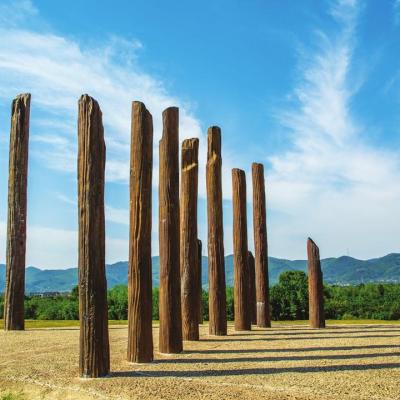 Suzhou - A new archaeological work station helmed by Wang Wei, chief expert for China's Project to Trace the Origins of Chinese Civilization (PTOCC), was recently launched in Suzhou, East China's Jiangsu Province. Under Wang's supervision, the work station will scrutinize Suzhou's regional archaeological sites like the Sanshandao site. Discovered 36 years ago, the site is home to the first Paleolithic culture ever discovered along the lower reaches of the Yangtze River. Besides Suzhou, the work station's expanded scope will focus on the civilization of the Taihu River Basin, which covers most of southern Jiangsu Province and some parts of Zhejiang Province such as the capital city Hangzhou and a large part of Shanghai. "It is a cradle of several sites that are pivotal to China's PTOCC," archaeologist Xue Feng told the Global Times. In Jiaxing, Zhejiang Province, the 7,000-year-old Neolithic Majiabang Culture is a "map piece" that can be put together with the later developed Songze and Liangzhu cultures. Hangzhou-based historian Xu Zikang told the Global Times that the Taihu River Basin's ancient cultural landscape carries distinct "Southern Yangtze characteristics," as seen in relics like the Liangzhu culture's water engineering systems, jade artifacts and rice fields. Speaking of Suzhou, the first prefectural-level city in China to establish a regional "civilization origin" exploration project, Wang told the Global Times that region-based archaeological sites in China form a "unified yet diverse" archaeological outlook. "Just like a satellite city, these work stations expand Chinese archaeological efforts, making them more comprehensive than just focusing on the study of individual 'capital' sites," Wang noted. In 2022, the authorities of Suzhou issued guidelines on the city's regional civilization origin research project. Five major projects have been highlighted under the new program, including tracing the origin of civilizations in the Taihu River Basin and a thorough research on prehistoric civilizations.
Suzhou - A new archaeological work station helmed by Wang Wei, chief expert for China's Project to Trace the Origins of Chinese Civilization (PTOCC), was recently launched in Suzhou, East China's Jiangsu Province. Under Wang's supervision, the work station will scrutinize Suzhou's regional archaeological sites like the Sanshandao site. Discovered 36 years ago, the site is home to the first Paleolithic culture ever discovered along the lower reaches of the Yangtze River. Besides Suzhou, the work station's expanded scope will focus on the civilization of the Taihu River Basin, which covers most of southern Jiangsu Province and some parts of Zhejiang Province such as the capital city Hangzhou and a large part of Shanghai. "It is a cradle of several sites that are pivotal to China's PTOCC," archaeologist Xue Feng told the Global Times. In Jiaxing, Zhejiang Province, the 7,000-year-old Neolithic Majiabang Culture is a "map piece" that can be put together with the later developed Songze and Liangzhu cultures. Hangzhou-based historian Xu Zikang told the Global Times that the Taihu River Basin's ancient cultural landscape carries distinct "Southern Yangtze characteristics," as seen in relics like the Liangzhu culture's water engineering systems, jade artifacts and rice fields. Speaking of Suzhou, the first prefectural-level city in China to establish a regional "civilization origin" exploration project, Wang told the Global Times that region-based archaeological sites in China form a "unified yet diverse" archaeological outlook. "Just like a satellite city, these work stations expand Chinese archaeological efforts, making them more comprehensive than just focusing on the study of individual 'capital' sites," Wang noted. In 2022, the authorities of Suzhou issued guidelines on the city's regional civilization origin research project. Five major projects have been highlighted under the new program, including tracing the origin of civilizations in the Taihu River Basin and a thorough research on prehistoric civilizations.
https://www.globaltimes.cn/page/202305/1290427.shtml
ANGLETERRE – 
 Londres - Romans occupying London in the 3rd century were so fearful of attacks from unruly local tribes that they encircled the city in protective walls, including one severing the provincial capital from its bustling quays. While sections of the inland wall are well-studied and remain visible in today’s London, the riverside portion had largely been forgotten. Building off archaeological work in the 1970s, the Museum of London Archaeology (MOLA) carried out excavations between 2006 and 2016 and has uncovered three extensive stretches. These newly excavated sections measure a total of 330 feet, and are located by the Riverbank House on Upper Thames Street, as well as Sugar Quay and Three Quays on Lower Thames Street. They are providing insights into period masonry and the broader architecture in Roman London. These 2,000-year-old riverside walls have now been afforded the highest level of heritage protection by England’s Department for Culture, Media and Sport and join the only other uncovered section of riverside wall, which is located at the Tower of London. In addition, well-preserved wooden wharf and quay structures that were discovered in the process of excavating the walls have been included in the new protection. The Roman timber quays were used to load and unload boats and the discoveries included a box quay from 133 C.E. Collectively, they demonstrate the considerable investment made in London’s Roman port. The wall, built from Kentish ragstone, reached up to 20 feet in height, had a circumference of two miles, and was unmatched by any other town at the time. The wall not only demonstrated Roman practicality, prioritizing defense over commerce, but was a status symbol of Londinium, the epicenter of Roman Britain.
Londres - Romans occupying London in the 3rd century were so fearful of attacks from unruly local tribes that they encircled the city in protective walls, including one severing the provincial capital from its bustling quays. While sections of the inland wall are well-studied and remain visible in today’s London, the riverside portion had largely been forgotten. Building off archaeological work in the 1970s, the Museum of London Archaeology (MOLA) carried out excavations between 2006 and 2016 and has uncovered three extensive stretches. These newly excavated sections measure a total of 330 feet, and are located by the Riverbank House on Upper Thames Street, as well as Sugar Quay and Three Quays on Lower Thames Street. They are providing insights into period masonry and the broader architecture in Roman London. These 2,000-year-old riverside walls have now been afforded the highest level of heritage protection by England’s Department for Culture, Media and Sport and join the only other uncovered section of riverside wall, which is located at the Tower of London. In addition, well-preserved wooden wharf and quay structures that were discovered in the process of excavating the walls have been included in the new protection. The Roman timber quays were used to load and unload boats and the discoveries included a box quay from 133 C.E. Collectively, they demonstrate the considerable investment made in London’s Roman port. The wall, built from Kentish ragstone, reached up to 20 feet in height, had a circumference of two miles, and was unmatched by any other town at the time. The wall not only demonstrated Roman practicality, prioritizing defense over commerce, but was a status symbol of Londinium, the epicenter of Roman Britain.
https://news.artnet.com/art-world/roman-barricade-london-new-sections-2295230
ESPAGNE  Canaries : Caleta de Arriba - Archaeologists on Spain's Gran Canaria island are puzzled: who were the six young men whose skeletons were found face-down, hands tied and covered with stones in a cliff-side cave? Evidence at the Caleta de Arriba site points to a violent death centuries ago which could pre-date the 15th century Spanish conquest of the archipelago off northwest Africa. "They are not buried in the strict sense ... This is a funerary practice that denotes very strong symbolic violence," explained Veronica Alberto, head of the excavation. The bodies had been forcefully placed on the rocky surface and then had stones thrown on them, she told Reuters. Some had straps or bindings on their limbs. "It could be an aboriginal burial, but due to the characteristics of the archaeological site we need to expand it and consider that they could be from other periods after the conquest, from 16th, 17th, 18th centuries," Alberto added. Without objects to help establish the period, scientists are waiting for radiocarbon dating tests on the bones. The archaeologists, who use security ropes while working on the steep terrain, said it was not a normal burial place because they only found men. All six had strong arms, suggesting they were involved in the same type of physical activity.
Canaries : Caleta de Arriba - Archaeologists on Spain's Gran Canaria island are puzzled: who were the six young men whose skeletons were found face-down, hands tied and covered with stones in a cliff-side cave? Evidence at the Caleta de Arriba site points to a violent death centuries ago which could pre-date the 15th century Spanish conquest of the archipelago off northwest Africa. "They are not buried in the strict sense ... This is a funerary practice that denotes very strong symbolic violence," explained Veronica Alberto, head of the excavation. The bodies had been forcefully placed on the rocky surface and then had stones thrown on them, she told Reuters. Some had straps or bindings on their limbs. "It could be an aboriginal burial, but due to the characteristics of the archaeological site we need to expand it and consider that they could be from other periods after the conquest, from 16th, 17th, 18th centuries," Alberto added. Without objects to help establish the period, scientists are waiting for radiocarbon dating tests on the bones. The archaeologists, who use security ropes while working on the steep terrain, said it was not a normal burial place because they only found men. All six had strong arms, suggesting they were involved in the same type of physical activity.
VIDEO = https://www.reuters.com/world/europe/spanish-scientists-seek-crack-mystery-canaries-skeleton-cave-2023-05-09/
GALLES – 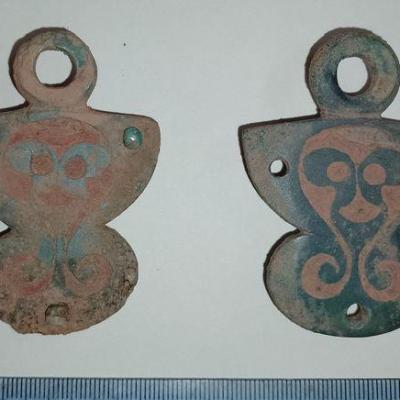
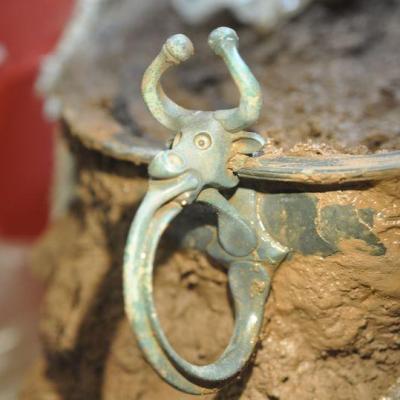 Llantrisant Fawr -A hoard of objects dating back thousands of years have been found in a field in remarkable condition. The objects, dating from the Iron Age and Roman era were found by a metal detectorist and have been declared treasure. Jon Matthews discovered them in March 2019 when he was metal-detecting in Llantrisant Fawr, Monmouthshire. He described the objects as "true beauty". Experts believe that some of the Roman finds could suggest a previously undiscovered settlement in the area. Here, the team discovered more artefacts - including a bowl decorated with an ox's face that the team initially believed to be a brooch. Following an investigation by staff from the Portable Antiquities Scheme in Wales (PAS Cymru) and Amgueddfa Cymru, a total of two complete and six fragmentary vessels were recovered. The remains of two wooden tankards and an Iron Age bucket with copper alloy fittings, an Iron Age copper alloy bowl, cauldron and strainer, and two Roman copper alloy saucepans have been identified. The vessels appear to have been buried as a group around the time of the Roman conquest, in the second half of the first century AD.
Llantrisant Fawr -A hoard of objects dating back thousands of years have been found in a field in remarkable condition. The objects, dating from the Iron Age and Roman era were found by a metal detectorist and have been declared treasure. Jon Matthews discovered them in March 2019 when he was metal-detecting in Llantrisant Fawr, Monmouthshire. He described the objects as "true beauty". Experts believe that some of the Roman finds could suggest a previously undiscovered settlement in the area. Here, the team discovered more artefacts - including a bowl decorated with an ox's face that the team initially believed to be a brooch. Following an investigation by staff from the Portable Antiquities Scheme in Wales (PAS Cymru) and Amgueddfa Cymru, a total of two complete and six fragmentary vessels were recovered. The remains of two wooden tankards and an Iron Age bucket with copper alloy fittings, an Iron Age copper alloy bowl, cauldron and strainer, and two Roman copper alloy saucepans have been identified. The vessels appear to have been buried as a group around the time of the Roman conquest, in the second half of the first century AD.
https://www.walesonline.co.uk/news/wales-news/immaculate-2000-year-old-carvings-26876428
CHINE –  Guangzhou - On May 18, International Museum Day, an exhibition featuring the archaeological discoveries made in Guangzhou will open at Changsha Museum in central China's Hunan. This special exhibition brings together 250 precious Qin (221-206 BC) and Han (206 B.C.-220 AD) dynasty relics excavated from the Guangzhou region, including 24 national-level cultural relics. The only complete Han Dynasty jade burial suit with red threads is the highlight. A jade burial suit is a ceremonial suit made from pieces of jade for royal members of the Han Dynasty. The one currently on display is 1.73 meters long and made from 2,291 pieces of jade sewn together using red silk thread. Pieces of jade connected with gold, silver, or copper were commonly used in such suits. However, this garment is exceptional because the jade is linked with silk, rendering it one of a kind. The suit is symmetrical, much like modern-day shirts, which was a new type of design at the time, never before seen in literature or archaeological excavations. It took experts three years to complete its restoration. This precious jade suit was unearthed from the mausoleum of the Nanyue King and is usually housed at the museum dedicated to the king’s final resting place. The mausoleum ranks as the largest painted stone chamber tomb from the Han Dynasty found in southern China. Over 1,000 sets and more than 10,000 pieces of cultural relics were unearthed there, with the bounty of burial objects marking the peerless status of the tomb owner. It is known as one of the five major archaeological discoveries in China from the 1980s. A gold seal found on the chest of the tomb owner with a word written on the seal provides reliable evidence of the owner's identity. It is the largest gold seal from the Western Han Dynasty ever excavated in China and the only Han Dynasty dragon knob-shaped emperor seal found to date. The exhibition will run until Nov. 12.
Guangzhou - On May 18, International Museum Day, an exhibition featuring the archaeological discoveries made in Guangzhou will open at Changsha Museum in central China's Hunan. This special exhibition brings together 250 precious Qin (221-206 BC) and Han (206 B.C.-220 AD) dynasty relics excavated from the Guangzhou region, including 24 national-level cultural relics. The only complete Han Dynasty jade burial suit with red threads is the highlight. A jade burial suit is a ceremonial suit made from pieces of jade for royal members of the Han Dynasty. The one currently on display is 1.73 meters long and made from 2,291 pieces of jade sewn together using red silk thread. Pieces of jade connected with gold, silver, or copper were commonly used in such suits. However, this garment is exceptional because the jade is linked with silk, rendering it one of a kind. The suit is symmetrical, much like modern-day shirts, which was a new type of design at the time, never before seen in literature or archaeological excavations. It took experts three years to complete its restoration. This precious jade suit was unearthed from the mausoleum of the Nanyue King and is usually housed at the museum dedicated to the king’s final resting place. The mausoleum ranks as the largest painted stone chamber tomb from the Han Dynasty found in southern China. Over 1,000 sets and more than 10,000 pieces of cultural relics were unearthed there, with the bounty of burial objects marking the peerless status of the tomb owner. It is known as one of the five major archaeological discoveries in China from the 1980s. A gold seal found on the chest of the tomb owner with a word written on the seal provides reliable evidence of the owner's identity. It is the largest gold seal from the Western Han Dynasty ever excavated in China and the only Han Dynasty dragon knob-shaped emperor seal found to date. The exhibition will run until Nov. 12.
https://news.cgtn.com/news/2023-05-10/The-only-complete-jade-burial-suit-to-be-displayed-in-Changsha-1jGQyNJ8wDu/index.html
SUISSE – 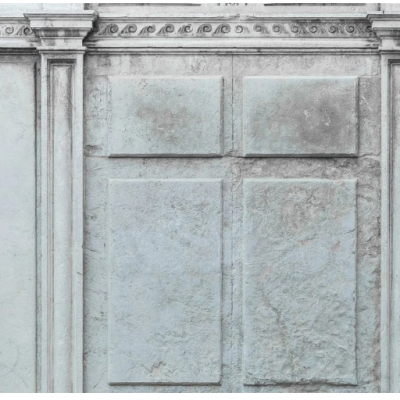
 Schaaren am Hochrhein - A surveyhas led to the discovery of a roman watch tower from the 4th century AD. The history of Switzerland under Roman rule dates from the Augustan period up until around AD 400. As the Empire’s frontiers receded to the Rhine, a chain of watchtowers was constructed from Lake Constance to Basel, with each tower no more than 2 kilometres apart. The defensive line protected the border from the Alemanni, a confederation of Germanic tribes on the Upper Rhine River that raided the frontier and eventually conquered parts of northern Switzerland.A visual inspection showed no physical remains above the surface; however, excavations confirmed the foundations of a square building measuring 7×7 metres with walls around 1 metre thick. Only the mortar and several stones indicating the outline of the building have remained, with the rest of the structure’s stones likely being removed and reused during later times. With the exception of large amounts of roofing tiles, finds within the building’s interior are limited to a military belt, a fibula, an amphora-shaped strap end, and a coin of Emperor Constantine I dated to after AD 311. Excavations also revealed the traces of a V-shaped trench surrounding the watch tower, which was likely reinforced with a palisade or wooden fortification and supporting buildings for animals or storage.
Schaaren am Hochrhein - A surveyhas led to the discovery of a roman watch tower from the 4th century AD. The history of Switzerland under Roman rule dates from the Augustan period up until around AD 400. As the Empire’s frontiers receded to the Rhine, a chain of watchtowers was constructed from Lake Constance to Basel, with each tower no more than 2 kilometres apart. The defensive line protected the border from the Alemanni, a confederation of Germanic tribes on the Upper Rhine River that raided the frontier and eventually conquered parts of northern Switzerland.A visual inspection showed no physical remains above the surface; however, excavations confirmed the foundations of a square building measuring 7×7 metres with walls around 1 metre thick. Only the mortar and several stones indicating the outline of the building have remained, with the rest of the structure’s stones likely being removed and reused during later times. With the exception of large amounts of roofing tiles, finds within the building’s interior are limited to a military belt, a fibula, an amphora-shaped strap end, and a coin of Emperor Constantine I dated to after AD 311. Excavations also revealed the traces of a V-shaped trench surrounding the watch tower, which was likely reinforced with a palisade or wooden fortification and supporting buildings for animals or storage.
https://www.heritagedaily.com/2023/05/late-roman-watchtower-discovered-on-swiss-border/147245
MEXIQUE – - Researchers have found that this pollution under the ancient cities is not modern. Scientists claim that the result of the ancient civilization's widespread use of mercury and products containing mercury between about 250 and 1100 AD. There are areas where pollution is so serious that today it can pose a threat to the health of archaeologists.< /p> “Pollution environmental exposure to mercury is commonly observed in modern urban areas and industrial landscapes. The discovery of mercury buried deep in soils and sediments in ancient Mayan cities is difficult to explain until we start looking at the archeology of the region, which tells us that the Maya used mercury for centuries,” says Dr. Duncan Cook, Associate Professor of Geography at the Australian Catholic University. .
https://thetimeshub.in/scientists-have-discovered-an-unexpected-danger-lurking-in-ancient-mayan-cities-what-is-known/
POLOGNE - 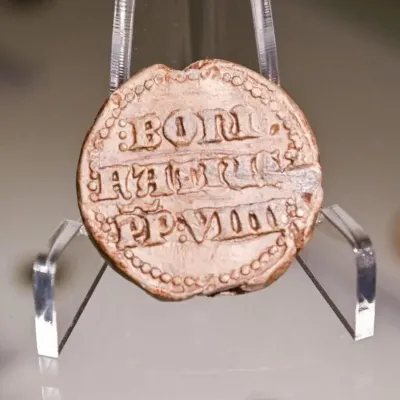
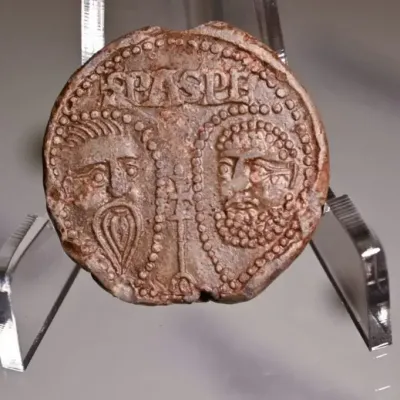 Budzistów - A medieval bull found in 2021 in Budzistów village (Kołobrzeg district), Poland has been restored and placed on display in the Museum of Arms in Kołobrzeg. Found by the PARSĘTA Exploration & Search Group two years back, the decree was uncovered in the area of the former cemetery in Budzistowo. It was during this that scientists determined that it dated from the reign of Pope Boniface IX (1350-1404). Dr. Robert Dziemba, the head of the Kołobrzeg History Department, said: “By studying the physio-chemical compositions of the bull, we were able to find it was original. The most important thing for us was the reverse as it contained information as to which Pope issued the decree. Because of this, we now know that it was issued by Pope Boniface IX.”According to historians, the bull was possibly kept in the Budzistowo monastery. Chemical compounds used in its manufacture, which were mostly pure lead, were traced to Sardinia, Cyprus, Greece, and Spain. The bull’s potential connections to the former monastery in Budzistowo, though, have piqued researchers’ interest. It was Johann Friederich Wachsen who noted that Pope Boniface IX granted a letter of indulgence to the resident Benedictine nuns in 1397, according to the chronicles he wrote in the 18th century. Usually attached by silk strings, papal bulls were hung on parchment and scrolls on which papal edicts, privileges, and indulgences were written as a means of authentication. Also featuring images of Saint Peter and Saint Paul, Dziemba speculates that this particular papal bull may have been lost in the 16th century.
Budzistów - A medieval bull found in 2021 in Budzistów village (Kołobrzeg district), Poland has been restored and placed on display in the Museum of Arms in Kołobrzeg. Found by the PARSĘTA Exploration & Search Group two years back, the decree was uncovered in the area of the former cemetery in Budzistowo. It was during this that scientists determined that it dated from the reign of Pope Boniface IX (1350-1404). Dr. Robert Dziemba, the head of the Kołobrzeg History Department, said: “By studying the physio-chemical compositions of the bull, we were able to find it was original. The most important thing for us was the reverse as it contained information as to which Pope issued the decree. Because of this, we now know that it was issued by Pope Boniface IX.”According to historians, the bull was possibly kept in the Budzistowo monastery. Chemical compounds used in its manufacture, which were mostly pure lead, were traced to Sardinia, Cyprus, Greece, and Spain. The bull’s potential connections to the former monastery in Budzistowo, though, have piqued researchers’ interest. It was Johann Friederich Wachsen who noted that Pope Boniface IX granted a letter of indulgence to the resident Benedictine nuns in 1397, according to the chronicles he wrote in the 18th century. Usually attached by silk strings, papal bulls were hung on parchment and scrolls on which papal edicts, privileges, and indulgences were written as a means of authentication. Also featuring images of Saint Peter and Saint Paul, Dziemba speculates that this particular papal bull may have been lost in the 16th century.
https://arkeonews.net/papal-bull-discovered-in-a-former-cemetery-dated-to-the-14th-century/
EGYPTE –  Wadi al Agebab - Egyptologists at the University of Bonn and the University of Aswan want to systematically record hundreds of petroglyphs and inscriptions dating from the Neolithic to the Arab period and document them in a database. The desert in southern Egypt is filled with hundreds of petroglyphs and inscriptions oldest dating from the fifth millennium B.C. and few have been studied. A more than 5,000-year-old rock painting that shows a boat being pulled by 25 men on a rope among them stands out in particular. The first newly discovered sources shed new light on the pre-Pharaonic period of the Fourth Millennium and the importance of the socio-cultural periphery. It is depicted over the bumps and edges of the rock, how a boat is pulled by 25 men with raised arms on a rope. A ritual is obviously impressively shown here – namely the great procession of an image of the gods, according to Morenz. This is clear from image details, he said: the boat with shrine and standard and, in particular, the cattle horns, which are typical of sacred imagery. “This rock image gives us insights into the sacred design of an apparently remote landscape, the Wadi al Agebab, which is still largely unknown in research,” says the Egyptologist. The entire later Pharaonic culture is based on the beginnings of the pictorial staging of religion. Morenz: “Here, the high importance of religion and especially the cult of the gods in the still pre-Egyptian society of the second half of the Fourth Millennium is revealed as a culture-creating factor.”
Wadi al Agebab - Egyptologists at the University of Bonn and the University of Aswan want to systematically record hundreds of petroglyphs and inscriptions dating from the Neolithic to the Arab period and document them in a database. The desert in southern Egypt is filled with hundreds of petroglyphs and inscriptions oldest dating from the fifth millennium B.C. and few have been studied. A more than 5,000-year-old rock painting that shows a boat being pulled by 25 men on a rope among them stands out in particular. The first newly discovered sources shed new light on the pre-Pharaonic period of the Fourth Millennium and the importance of the socio-cultural periphery. It is depicted over the bumps and edges of the rock, how a boat is pulled by 25 men with raised arms on a rope. A ritual is obviously impressively shown here – namely the great procession of an image of the gods, according to Morenz. This is clear from image details, he said: the boat with shrine and standard and, in particular, the cattle horns, which are typical of sacred imagery. “This rock image gives us insights into the sacred design of an apparently remote landscape, the Wadi al Agebab, which is still largely unknown in research,” says the Egyptologist. The entire later Pharaonic culture is based on the beginnings of the pictorial staging of religion. Morenz: “Here, the high importance of religion and especially the cult of the gods in the still pre-Egyptian society of the second half of the Fourth Millennium is revealed as a culture-creating factor.”
https://arkeonews.net/staging-of-religion-on-rock-paintings-that-are-thousands-of-years-old-in-southern-egypt-desert/